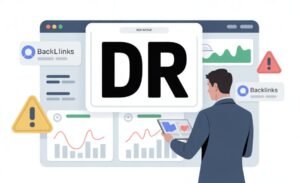SEO is not just about keyword research anymore. It’s about understanding human behaviours, shaping the real experiences, and using AI smartly. The tactics that worked even a year ago now need a reboot or we say; reforms! But don’t worry, these seven strategies will help you stay ahead in the game whether you’re running a solo blogging site or leading a digital marketing team.
1. Keyword & Intent Research: Meeting People Where They Are:
Ever typed something vague into Google and found exactly what you needed? That’s because the best-ranking content doesn’t just include keywords. It matches intent.
Search engines like Google prefer understanding what people mean, not just what they type. If someone searches “how to lower bounce rate,” they don’t want a definition. They want a checklist, maybe even examples from real websites. Even guides from the best digital marketing agency in Pakistan focus on practical steps and real case studies rather than plain definitions.
Search engine operations analysis tools such as Semrush, Ahrefs and Google People Also Ask boxes show us what long-tailed queries people actually type. Optimizing the content by coming up with the content based on these queries will make you appear in the regular search results and artificial intelligence summaries.
2. On-Page Optimization: Say More With Less:
Clean, intentional on-page SEO still matters. That means using your main keyword and related terms (LSI keywords) naturally. Think of phrases like “search ranking factors,” “organic traffic tips,” or “improve site visibility.”
But just stuffing in synonyms won’t cut it. Search engines are smart enough now to read for clarity, structure, and flow. Use headers to guide readers. Use images with alt text. Keep paragraphs short—two to three lines max—to reduce cognitive load, especially on mobile.
And yes, Google still loves a good internal link strategy. So guide your readers. Show them where to go next.
3. Technical SEO & Core Web Vitals: Fix the Foundation:
A beautiful article on a slow, clunky site won’t rank. Google’s Core Web Vitals, focusing on load time, interactivity, and layout stability, remain some of the most critical ranking factors.
Your Largest Contentful Paint (LCP) should load under 2.5 seconds. Interaction to Next Paint (INP) needs to be under 200ms. These metrics reflect real user experience. If your site fails them, your rankings will slide, especially on mobile devices where patience runs thin.
The small change of optimizing the size of images, discarding unused plugins and as well as making the switch to a faster hosting platform has helped most companies to enhance their bounce rates by over 30 percent.
4. Link Building & Engagement: Authority Is Earned:
Backlinks still matter but not the way they used to. In 2025, it’s less about the number of links and more about who links to you and why.
That’s a win if your content earns links from niche-relevant sites, high-authority domains. More important are the user signals your content sends—low bounce rates, high time on page, and consistent interaction. Google picks up on this behaviour, recognizing pages that people actually find useful.
Do not ask others to give backlinks but focus on content that people find interesting to reference and communicate about. It can be a prudent guide, a good infographic, or a properly-researched case study.
5. AEO and GEO: The New Frontier of Search:
This is where things get interesting. SEO now intersects with AI in two powerful ways: Answer Engine Optimization (AEO) and Generative Engine Optimization (GEO).
AEO means formatting your content so that AI assistants like ChatGPT, Perplexity, and Google’s Search Generative Experience (SGE) can pull direct answers from your site. Think: question-driven content, short punchy answers, and clearly labeled sections.
GEO is the new frontier—getting your brand cited by AI tools as a source of authority. This requires structured data, rich content clusters, and a reputation for trustworthy insights.
Many brands that invested early in these approaches are already seeing reduced dependence on traditional traffic sources and more visibility through AI-driven platforms.
6. Voice and Mobile Search: Search On the Go:
Your site must be mobile-first since more than 80 percent of visitors are on the phone when using your site, it is no longer about mobile-friendliness. It has to load quickly, have a vertical design, be button-friendly to use with thumbs. and be usable as well on a 5-inches screen as it is on a monitor.
Add to that the growing influence of voice search. People aren’t typing “cheap hotels New York.” They’re saying, “What’s the best affordable hotel in Manhattan for couples?”
When you make use of conversational language, you might have featured snippets, schema markup on location, reviews, and more, you will have a much better chance when one asks a question aloud.
7. AI-Powered Content & Human Experience: Strike a Balance:
Indeed, AI is assisting content teams to work more swiftly. Prompts such as ChatGPT or Jasper can come up with headlines, summarize blog entries or re-package content to use on social media. The problem is that there is a catch, namely: AI cannot substitute human intelligence.
The algorithms of Google are already warning against AI-fluff, which seems soulless. Therefore, even when it is okay to rely on AI to be fast, human editing must be introduced, personal examples, and brand voice. Consider AI as a co-pilot and not a skipper.
Final Thoughts:
The year 2025 is past the stage in SEO of pleasing the search engines. It is up to the creation of value to man and machine. The rules of the game have changed, yet the objective is identical, it is being discovered, trusted and performing.
Combine such traditional SEO concepts as rapid loading, strong content with new approaches such as AEO, GEO and voice optimisation. To remain open minded, be adaptable and experiment.
Due to the fact that the brands, which win, are not the ones to follow every trend. These are the ones that are aware about who they are communicating with, evolve with purpose and create digital lives that people can really use.
FAQs:
No. Keyword stuffing actually hurts your rankings. Focus on natural language, intent, and relevance.
Use tools like Google PageSpeed Insights or Web.dev. Aim for LCP under 2.5s and INP under 200ms.
Create content others want to reference—like tutorials, stats, or unique insights. Outreach helps, but quality earns links.
Not if it’s edited, fact-checked, and brings value. Pure AI content with no human input? Risky.
Absolutely. For businesses with physical locations, optimizing for local search is one of the highest-ROI strategies.






